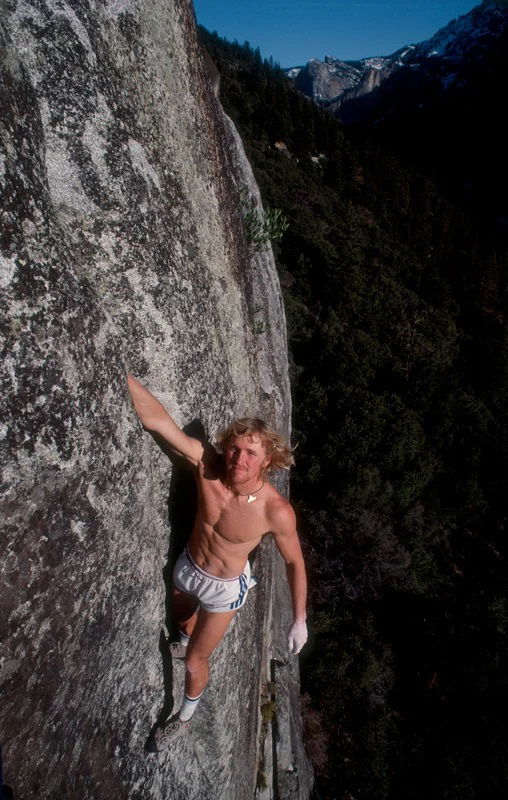

Long before Alex Honnold became the greatest free solo climber in modern-day, there was John Bachar. While few people outside the rock climbing world may know about Bachar’s legacy, he was a widely popular figure for his daredevil manner of rock climbing. He created the eponymously named Bachar Ladder training device and was considered the world’s greatest free solo climber during his time. However, it was his free solo climb in one of California’s notorious rocks that took his life. Here’s delving into his gruesome end.
Watch What’s Trending Now!
John Bachar died at age 52, in his hometown of Mammoth Lakes, California after he fell from a steep structure called the Dike Wall. Although his life hasn’t been free of controversies, he still received some of the greatest honors and respect from his fellow peers for his contribution to the world of rock climbing.
ADVERTISEMENT
Article continues below this ad
A poetic end to the life of an adrenaline junkie John Bachar
During one of his climbs, author and rock climber Jeff Smoot recalled witnessing Bachar in action. He said, “I stood mesmerized, watching as he climbed upward perfectly. Without emotion, without apparent effort, as if the force of gravity had become momentarily suspended to allow his passage there”. Smoot would later send his regards and share his honest opinion on Bachar’s tragic demise.
ADVERTISEMENT
Article continues below this ad
Bachar died after slipping and falling from the Dike Wall near his house. Commenting on his death, Smoot said, “John Bachar’s death did not surprise me. I accepted it with a grim admiration […] He was supposed to die that way. An ordinary death would not have befitted this legend”. Bachar’s status as a legend is not up for debate. He had already achieved daring ascensions that are still considered too risky by modern climbers. As per the Alpinist, John Gill, the father of modern bordering, called Bachar “a Hermes… with wings on his feet”.
ADVERTISEMENT
Article continues below this ad
John Bachar exported the use of climbing without any ropes or harnesses. As mentioned above, long before Honnold climbed the El Capitan and gained fame, Yosemite Park was a hotbed for rock climbers in the late 70s and 80s. Bachar was one of the most frequent visitors there and left his mark by making gravity-defying ascents to the El Capitan.
The fallout with new climbers and the tragic end of Bachar
His style of climbing drew its fair share of criticisms. In fact, most discussions were concerned with his affinity toward his restricted use of gear. He was depicted as an arrogant climber, one who wouldn’t bend to normal rules. This criticism soon emboldened his detractors including fellow new-age climbers and admirers. Apparently, they were not happy with Bachar ruining the purity of rock climbing from the olden days when it was to be climbed from the ground up. All these controversies caught up to Bachar and he was soon ostracized from the new school of the climbing community.
View this post on Instagram
He also suffered a deadly accident in 2006 while driving through Nevada during nighttime. His car flipped and his business partner Steve Karafa died in the accident. This made a deep impact on Bachar and he was never the same again. Three years later, he passed away.
Watch This Story | 50-year-old Surfing Legend Kelly Slater’s Top 5 Surf Destinations
Despite all the controversy, John Bachar’s contribution to rock climbing and extreme sports, in general, is unbound. Many people sent their regards after he passed away. Were you aware of Bachar’s immense contribution to rock climbing and do you know of any more forgotten legends from other sports? Do let us know.
ADVERTISEMENT
ADVERTISEMENT
ADVERTISEMENT
ADVERTISEMENT


